PHYSICS HIGH SCHOOL NOTES FOR KCSE PREPARATIONS
|
Just incase any document encrypted, use this password 'siri2u!'
FORM 1
FORM 2
FORM 3
FORM 4
PHYSICS SYLLABUS TOPICS
2 Comments
Types of ForceGravitational force
This is a force of attraction between two bodies of given mass. Objects thrown from the earth’s surface always falls back to the surface of the earth. This force which pulls the body towards the centre of the earth is called Gravitational force.
Moon and other planets also have their gravitational force to objects. The pull of gravity on the body towards the centre is called weight. The weight of an object varies on different planets because of different gravitational pull. Tension Force
Tension force is as a result of two opposing forces applied. The pull or compression of a string or spring at both of its ends is called Tension.
Compressed or stretched object will tend to regain its original shape ,when the stretching or compressing force is removed .Materials that can be extended without breaking are called elastic materials. Such materials can be used to make a spring balance an instrument used to measure force. Other examples include; bows and catapults. Upthrust Force
The upward force acting on an object immersed in a fluid (liquid or gas) is called upthrust force.
An object in a vacuum will not experience upthrust. Example An object weighs 80N in air and 60N when immersed in water. Calculate force acting on the object. Solution
Exercise
Frictional Force
Frictional force is a force that opposes relative motion between two surfaces in contact.
The opposing force involving a fluid is called viscous drag (viscosity).This viscous drag limits the speed with which a body can move in a liquid. Friction can be applied during walking.
EXPERIMENT:
To investigate frictional force. Apparatus: Wooden block, rollers. Procedure:
The wooden block starts to move when the applied force is just greater than frictional force between the block and the surface of the bench. Frictional force can be reduced by using rollers, oiling and smoothening. MAGNETIC FORCE
Magnetic force is the force of attraction or repulsion between a magnetic material and a magnet.
A magnet has two types of poles, a north pole and a south pole. Like poles repel while unlike poles attract. some materials are attracted by a magnet while others are not .Those that are attracted are called magnetic materials e.g. iron ,steel ,nickel and cobalt while those that are not attracted are called non-magnetic materials e.g. wood and aluminium. COHESIVE AND ADHESIVE FORCES
The force of attraction between molecules of the same kind is known as cohesive force e.g. A water molecule and another water molecule.
The attraction between molecules of different kinds is known as adhesive force e.g. between water molecules and molecules of the container in which the liquid is put. EXPERIMENT:
To see the behaviour of water on different surfaces.
Observation
EXPLANATION
Water wets the glass surface because the adhesive forces between the water molecules and the glass molecules are greater than the cohesive forces between water molecules. Water does not wet the waxed glass surface because the cohesive force is greater than the adhesive. If mercury was used in the experiment it could be observed that small drops on a clean glass dish collect into spherical ball as shown below
This is due stronger cohesive forces between mercury molecules which forms small spherical drops. The adhesive force between mercury and glass makes mercury not wet glass.
N/B: Mercury is poisonous and should not be handled in ordinary laboratory. EXPERIMENT: To demonstrate cohesive and adhesive forces of liquids on narrow tubes APPARATUS: Narrow tubes of different size of bore, beaker and water
OBSERVATION
The level of the water inside the tubes is higher than outside the tubes. A meniscus is formed at the top of the water level and it curves upwards (concave). The rise in the tube with a smaller bore is higher than in the tube with a larger bore. Different liquids rise by different heights depending on the diameter of the glass tube. When mercury is used, the level of mercury inside the tubes goes lower than that outside the tubes. The surface of the mercury will curve downwards (convex). EXPLANATION Adhesive forces between the water and glass is greater than cohesive forces between the water molecules, the water rises up the tube so that more water molecules can be in contact with the glass. This wets the glass. Liquids such as glycerol, kerosene and methylated spirit rise in tubes. On the other hand, the force of cohesion with the mercury is greater than the force of adhesion between glass and mercury. The mercury sinks to enable mercury molecules to keep together. SURFACE TENSION
This is a force that causes the surface of a liquid to behave like a stretched plastic skin.
The force is due to the force of attraction between individual molecules in a liquid. Its due to this force that liquids form drops, water wets the surface but runs off others, some insects like pond skaters manage to rest on the surface of water without sinking, water rises up in narrow glass tubes but mercury is pushed down to a lower level in the same tube and steel needle or razor blade floats on water even though steel is denser than water EXPERIMENT: To investigate the behaviour of a liquid surface APPARATUS: Beaker, water, soup solution, razor blade or steel needle. PROCEDURE:
MOLECULAR EXPLANATION OF SURFACE TENSION
A Molecule say C deep in the liquid is surrounded by molecules on all sides so that the net force in it is zero. However, molecules of the surface, say A and B will have fewer molecules on the vapour side and hence it will experience a resultant inward force causing the surface of the liquid to be in tension.
Factors Affecting Surface Tension
Consequences/Effects of surface tension
ASSIGNMENT (make notes)
ELECTROSTATIC FORCE
This is a type of force which causes attraction or repulsion between charges. Charges can be positive or negative.
Like charges repel and unlike charges attract EXAMPLES
Explain why when you remove cloth at night you observe sparks ELECTRIC FORCE
It’s a force which acts on two conductors carrying electricity.
ACTION AND REACTION
They are two equal forces but acting in opposite to each other.
When a block of wood is placed on a table, its weight acts on a table (action). It is pressed on the surface downwards. The reaction (opposite force) of the table acts on the block.
When one force acts on a body, an equal and opposite force acts on one another.
EXERCISEMASS AND WEIGHT
Mass is the quantity of matter in an object while weight is a measure of the pull of gravity on an object. The S.I unit of mass is kg (kilogram) and of weight is Newton (N).
Mass of an object is a scalar quantity while weight is a vector quantity (since weight is a pull of gravity directed to the centre of the earth). Due to the shape and rotation of the earth, the weight of an object varies from place to place while mass is constant (does not change). A body weighs more at the poles than at the equator. Differences between mass and weightRelationship between mass and weight
Weight =Mass x gravitational
W=mg
Example 1
Find the weight of an object whose mass is 50 kg. W=mg 50 x10 =500 N Example 2 Find the mass of an object whose weight is 900N W =mg 900/10=10/10M M=90kg Example 3 An astronaut weighs 900N on earth .On the moon, he weighs 150 N .Calculate the moon’s gravitational strength. (g=10N/Kg) M=w/g =900/10 =90kg On moon, w=mg g=w/m =150/90 =1.67N/Kg MEASURING FORCE
Force is measured using an instrument called a spring balance.
The extension of a spring can be used to measure an applied force. The larger the force, the more the spring extends. A spring balance measures forces and should therefore calibrated in newtons. Some spring balances are calibrated in kilograms. In such cases, one is advised to convert from kilograms to newtons. (1Kg = 10N)
EXAMPLE 1
The length of a spring is 16.0cm. Its length becomes 20.0cm when supporting a weight of 5.0N. Calculate the length the length of the spring when supporting a weight of; a) 2.5N b) 6.0N c) 200N Solution
EXAMPLE 2
A spring stretches by 8.0mm when supporting a load of 2.0N.
To print, you need kcse membership plans What is force?
Force is a pull or a push on a body.
The SI unit for measuring force is newtons (N)
Effects of force
Force is represented by a line with an arrow showing the direction it acts. i.e. TYPES OF FORCES
|
Archives
December 2024
Categories
All
Physics notes form 1 to 4
|
||||||||||||||||||||||||||||||||||||||||||||||||||||||||||||||||||||
We Would Love to Have You Visit Soon! |
Hours24 HR Service
|
Telephone0728 450425
|
|
8-4-4 materialsLevels
Subjects
|
cbc materialsE.C.D.E
Lower Primary
Upper Primary
Lower Secondary
Upper Secondary
|
teacher support
Other Blogs
|

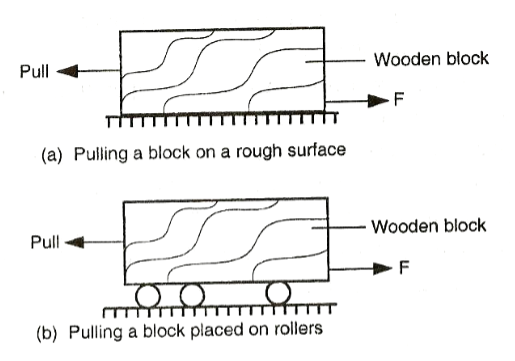



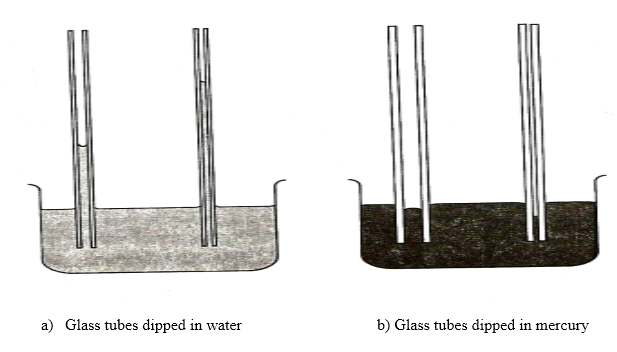
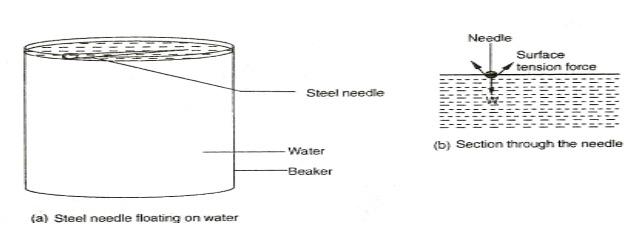
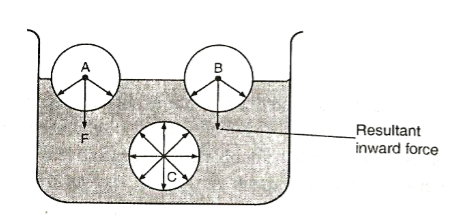

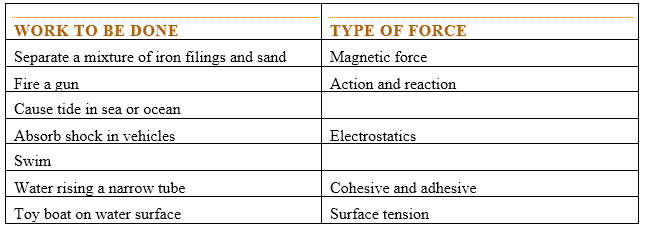

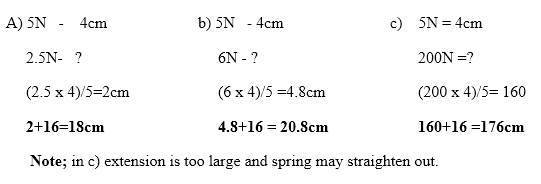

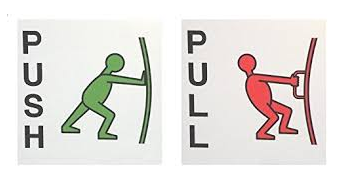
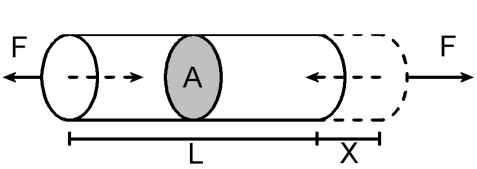
 RSS Feed
RSS Feed